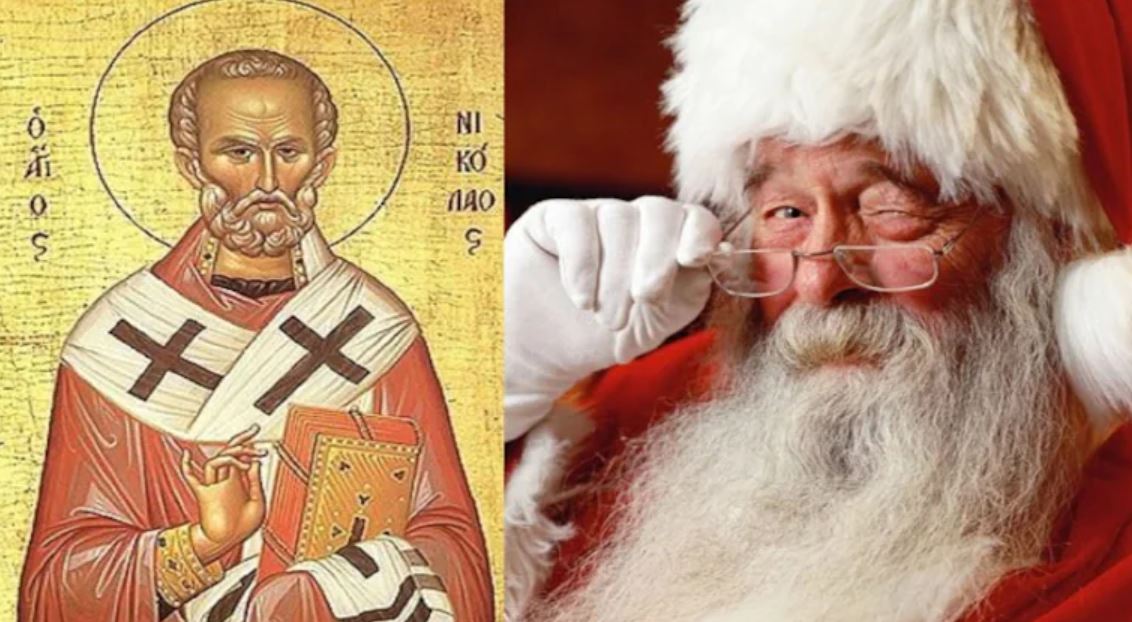by Ed Whelan, Contributing Writer, Classical Wisdom
We are all familiar with Santa Claus, at least in the western world.
The inspiration for the modern Santa was the Christian Saint Nicholas (285-342/343AD). Saint Nicholas was a famed miracle worker, known for his charity, and the patron saint of sailors, pawn brokers, children and others. The story of Saint Nicholas is essential to understand the evolution of the story of Santa, and also offers us a unique insight into Christianity in Late Antiquity.
The Life of Saint Nicholas
Saint Nicholas was probably a historical figure, and by the 6th century AD churches were dedicated in his name. We know very little about the real Saint Nicholas, and our sources concerning his life come from centuries after his death. Many of these are based on oral traditions and Christian works. It is possible that many of the stories of the Saint are based on the pagan philosopher Apollonius of Tyana.
According to the sources, Saint Nicholas was born in Patara, Lycia (modern Turkey) into a wealthy Christian family sometime in 285 AD. He was a very pious young man, and was orphaned very young. Some stories claim that much of his inheritance was stolen. Despite this, he was noted for his charity and almsgiving. In one story, he secretly gave away his money to the father of three poor girls so that they could marry. He travelled to the Holy Island, and during his voyage there he was able to miraculously calm a storm and save his ship. Because of this and other miracles, he is the patron saint of sailors.
His uncle was the Bishop of Myra (Demre in Turkey). The young saint went to visit his uncle, but discovered that he had died. The local Christian community then elected him their bishop, which was the custom in Late Antiquity. During Emperor Diocletian’s persecution of the Christians (303-313 AD), it is claimed that Nicholas was arrested and imprisoned. He miraculously survived, and went on to become a leader in the Christian Church during the reign of Constantine the Great. There is some evidence that Nicholas attended the Council of Nicaea, and that he was a champion of Orthodoxy. In one account, he is alleged to have slapped the face of the heretical Arius.
Saint Nicholas was clearly a man of some standing. He is reputed to have stopped soldiers looting civilians in his province. A well-known legend has him saving the lives of three generals whose execution was ordered by the Emperor Constantine. These tales are indicative of the real influence and political power that Christian bishops had in the Roman Empire by the 4th Century AD. It is claimed by several authors that Saint Nicholas died on December 6th 342/343 AD. His bones were eventually brought to the Italian city of Bari, and this is why in some account he is referred to as Saint Nicholas of Bari. His relics are buried in the Basilica San Nicola. Forensic scientists have tested a bone fragment and established that it dates from the 4th century AD. Today, Saint Nicholas is still worshipped as a saint by many Christians, especially members of the Orthodox Churches. There is an island named after the Christian bishop off the southern coast of Turkey.
From Saint to Santa Claus
After his death, many stories were told about the miracles of St Nicholas. Indeed, he is often referred to as ‘Nicholas the Wonderworker’. Because of his charity and his kindness to the young, he became the patron saint of children. In one story, he brought three children back from the dead who had been murdered by a butcher who intended to sell their flesh as meat during food shortages. His cult grew, and Theodosius III ordered a Basilica to be built over his grave.
During the Middle Ages, the cult of Saint Nicholas spread all over Europe and the Near East. During the Reformation, his cult was suppressed in many lands, but continued to flourish in Catholic and Orthodox societies. In the Dutch Republic, by the 17th century Saint Nicholas was celebrated on the 6th of December. During these celebrations, children would receive gifts. The Dutch version of Saint Nicholas, affectionately known as Sinterklass was brought to America before the Revolution.
The America poet, Clement Clarke Moore, wrote a poem about Saint Nicholas, and he portrayed him as a portly and cheerful man, not at all like the pious and ascetic Christian bishop. Moore also described Nicholas as riding in a sleigh pulled by flying reindeers. This came straight out of the imagination of the poet. In the 1880s, the famous cartoonist Thomas Nast began to draw Saint Nicholas in a red suit with white fur. By the early 20th century, Saint Nicholas had morphed into Santa Claus (or Father Christmas).
Conclusion
Saint Nicholas inspired the stories of Santa Claus, probably because of his legendary charity and kindness to children. In reality he was a Christian saint who likely played a not insignificant role in Late Roman religion and society. The dramatic transformation from Saint to Santa demonstrates how narratives can shift.
Will YOU get a visit from Saint Nicholas this year?












One comment
Don’t forget about Odin & Sleipnir. :)
Our apologies, you must be logged in to post a comment.